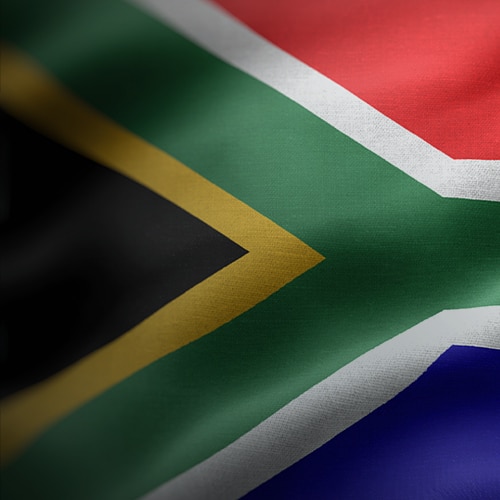Coffee Table Economics (CTE) with Anchor, by Casey Sprake, is distributed periodically. CTE is a compilation of Casey’s research, analysis, and perspectives on key South African (SA) and global economic data such as inflation, spending trends, and international market dynamics, including socio-political events and the multiple factors shaping the world economy.
Executive summary
In this week’s edition, we highlight the following:
- Where money lives: The shifting map of global wealth. Global wealth surged again in 2024, but the UBS Global Wealth Report 2025 shows a far more uneven reality beneath the averages. Switzerland, the US, and Hong Kong top the charts, yet median figures expose striking disparities, with Luxembourg and Australia leading on equality. Meanwhile, the rise of “Everyday Millionaires” and the looming US$83trn wealth transfer are reshaping the global financial landscape in ways too big to ignore.
- The return of price pressures: Why July’s inflation print matters for the SA economy. SA’s inflation edged up to 3.5% in July (the highest in nearly a year), driven by surging food prices, steep municipal tariff hikes, and a rebound in fuel costs. While the SARB’s new 3% target preference offers hope for stability, stubborn food and administered price pressures risk keeping inflation sticky and households under strain. The coming months will test whether policy can balance credibility with growth in an economy still grappling with fragile confidence and rising living costs.
- Beyond the pipe dream: How private partnerships could rescue SA’s water system. SA’s water sector is sliding into a crisis, with ageing infrastructure and inefficiencies leaving millions without reliable access to water. Case studies from the Bureau of Economic Research’s (BER) Impumelelo Economic Growth Lab show how private concessions like Siza Water and Silulumanzi have delivered efficiency, quality, and financial sustainability but reveal the limits of a purely commercial model. The real solution lies in a hybrid approach that blends private discipline with public responsibility to secure water that is not just efficiently delivered, but fairly shared.
Where money lives: The shifting map of global wealth
Global wealth continued to expand in 2024, with average wealth per person rising 4.6% YoY. Yet, as the UBS Global Wealth Report 2025 underscores, the picture is far from uniform across countries and regions. Average wealth is calculated by dividing total household wealth by the adult population; yet this metric can be distorted by extreme concentrations at the top of the wealth ladder. Even so, it remains a valuable starting point. By this measure, Switzerland once again leads the world with average wealth per adult of US$687,166, followed closely by the US at US$620,654 and Hong Kong at US$601,195. Many of the highest-ranking nations are small but globally influential financial hubs, such as Hong Kong and Luxembourg. Notably, the US jumped from fourth place in 2023 to second place in 2024, reflecting the strong performance of financial markets and a stable US dollar.
Nonetheless, averages only tell part of the story. Median wealth (a more representative measure that identifies the midpoint of wealth distribution) offers deeper insight into inequality. Here, the gap between countries becomes more pronounced. The US, for example, ranks second globally in average wealth but slips to fifteenth in median wealth, reflecting its wide internal wealth disparities. By contrast, Luxembourg takes the lead in median wealth at US$395,000 per adult, followed by Australia at US$268,000. This contrast illustrates how wealth is distributed much more evenly in some countries than in others, despite similar headline averages.
The broader global picture reveals a world that has become steadily richer since the turn of the millennium. With a compound annual growth rate (CAGR) of 3.4% in real terms since 2000, wealth accumulation has shown remarkable resilience. Even after adjusting for inflation and debt, total wealth has consistently expanded, and the lowest wealth band (those with less than US$10,000) continues to shrink year after year. While growth momentum shifted from Europe, the Middle East, and Africa in 2023 to North America in 2024, the long-term trajectory remains one of steady expansion.
One of the most striking developments in the UBS report is the rise of the “Everyday Millionaires” or EMILLIs- those with assets between US$1mn and US$5mn. Their numbers have more than quadrupled since 2000, reaching 52mn worldwide and collectively holding US$107trn in wealth by the end of 2024. This puts them almost on par with the wealth held by the world’s ultra-high-net-worth individuals ([UHNWIs], those with over US$5mn). While the pace of growth varies across regions, the upward trend is nearly universal, signalling the increasing prevalence of millionaires in societies once dominated by far lower wealth brackets. The millionaire population continues to expand, with 680,000 new entrants added in 2024 alone- a 1.2% YoY increase. Türkiye saw the fastest percentage increase, while the United Arab Emirates (UAE) also posted robust gains. In absolute terms, the US remains dominant, creating over 1,000 new millionaires per day last year, far outpacing Western Europe and Greater China combined. Mainland China also contributed significantly, adding around 380 new millionaires each day. Looking forward, UBS projects that by 2029, another 5.3mn people will join the ranks of global millionaires, a nearly 9% increase from 2024.
Regionally, wealth growth in 2024 was led by Eastern Europe, where total personal wealth expanded by over 12%. The US followed closely, while Greater China and Southeast Asia posted more moderate increases. Western Europe, Oceania, and Latin America, however, experienced a relative decline compared to the previous year. Over the next five years, UBS expects North America and Greater China to remain the main engines of global wealth creation, while smaller markets continue to benefit from niche growth opportunities. The report also points to long-term structural shifts shaping the future of wealth. Chief among these is the “great wealth transfer,” with an estimated US$83trn expected to change hands globally over the next two decades. Women stand to benefit significantly, with US$9trn of that figure projected to transfer between spouses, further amplifying their role in wealth management and investment decisions.
Yet measuring wealth is not without its challenges. Currency fluctuations can distort comparisons, while many countries still lack robust mechanisms for regularly capturing wealth data. In addition, individuals are often reluctant (or simply unable) to provide accurate valuations of key assets such as property. As a result, the report emphasises that while wealth measurement may lack pinpoint precision, it remains invaluable for identifying broader trends and shifts in the global economy.
The bottom line
Taken together, the UBS Global Wealth Report 2025 paints a clear picture: The world is getting progressively richer, but in uneven ways. The widening gap between average and median wealth highlights persistent inequality, even as the middle tiers of wealth expand through the rise of EMILLIs. With new millionaires emerging at a rapid pace and the most significant intergenerational transfer of wealth in history already underway, the global financial landscape is entering a period of profound transition. North America and China will remain the main drivers, but smaller wealth hubs will continue to punch above their weight. For policymakers, investors, and households alike, understanding these dynamics is crucial- not only for navigating today’s wealth distribution but also for preparing for the shifts of tomorrow.
The return of price pressures: Why July’s inflation print matters for the SA economy
SA’s consumer price inflation (CPI) picked up in July, highlighting just how delicate the balance remains between easing price pressures earlier this year and the new wave of cost increases now filtering through. Headline CPI rose to 3.5% YoY, up from 3.0% in June- the highest level since September 2024 (3.8%). MoM, prices climbed by a notable 0.9%, primarily driven by food, municipal tariffs, and fuel.
Food remains the biggest pressure point. Inflation for food and non-alcoholic beverages accelerated to 5.7% in July from 5.1% the month before, with meat, vegetables, and “other food” categories leading the rise. Meat, particularly beef, saw the steepest climb- up 10.5% YoY, the fastest pace since early 2025. This is mainly due to disruptions from ongoing foot-and-mouth disease (FMD), which has cut supply and kept prices high. Looking ahead, risks remain on the table: outbreaks of animal diseases, such as avian flu, could prolong these pressures well into 3Q25. While additional supply from markets like Brazil may help ease conditions later in the year, the immediate concern is that persistently high food costs will continue to squeeze lower-income households, who spend a far greater share of their income on food.
Utility tariffs added another sharp hit to consumers in July as municipalities rolled out their annual adjustments. Water tariffs jumped 12.1% (the steepest increase since 2018) while electricity tariffs climbed 10.6%. Though slightly softer than last year’s 11.5% rise, years of above-inflation hikes are leaving households and businesses under heavy strain. For the first time, categories such as refuse collection (up 6.6%) and sewage removal (up 6.5%) were included in the CPI basket, further embedding the rising cost of essential services into inflation data. On top of this, new levies introduced in Tshwane and Cape Town added extra pressure. Both are being challenged in court, with the Pretoria High Court ruling in favour of lobby group AfriForum earlier this month against the City of Tshwane and declaring the municipality’s R194/month cleaning levy unlawful. On Monday (25 August), the same court dismissed the metro’s application for leave to appeal. The case against Cape Town’s new rates and tariffs will be heard in September, but until it is resolved, it remains an added burden on household utility bills.
Fuel prices also reversed course in July after four months of declines, rising 2.6% MoM. That shift narrowed the annual rate of decrease from 11.2% in June to 5.5% in July. While fuel inflation is still negative compared to last year, those favourable base effects are fading, signalling that renewed upward pressure could emerge in the coming months. Taken together, the July data confirm that inflation is now on an upward path. Inflation averaged 3.0% in 1H25, firmly at the bottom of the South African Reserve Bank’s (SARB) 3%–6% target range. With food and fuel costs edging up from a low base and higher utility tariffs coming into effect, both the SARB and independent forecasts see inflation averaging closer to 3.7% in 2H25.
This comes as the SARB has officially adopted a 3% inflation preference, aiming to firmly anchor expectations at the lower end of its previous range. If inflation settles between 3% and 4%, the SARB may find room for a measured easing cycle. But the risks remain tilted to the upside, given stubborn food and administered price pressures. For households, the reality is apparent: elevated food costs are hitting lower-income groups hardest, while higher municipal tariffs are raising fixed living costs for everyone. The result is shrinking disposable incomes, weaker consumer confidence, and slower retail demand- factors that weigh heavily on an already fragile economy.
Looking ahead, several factors will shape the inflation path. Global oil prices remain a key wildcard, with geopolitical risks threatening further fuel price increases. Domestically, food inflation could remain sticky if disease outbreaks persist or if El Niño-linked weather disruptions take hold. Meanwhile, municipal tariffs will continue to act as a structural floor under inflation regardless of other trends. Against this backdrop, the SARB’s new 3% preference has sparked debate. Critics argue it sets the bar unrealistically low in an environment where structural cost pressures- think electricity shortages, high administered prices, and volatile food costs- fall outside monetary policy’s control. Supporters, however, see it as a long-term strategy: by locking in expectations at 3%, risk premiums could fall, investment confidence could improve, and households might become less vulnerable to future inflation shocks.
The bottom line
Ultimately, the coming quarters will test the credibility of this framework. If inflation holds around 3%–4%, the SARB will have space to ease and support growth cautiously. However, if food, fuel, and utilities stay stickier than expected, policy may need to remain tighter, even as growth struggles. July’s inflation print, then, is more than just another data point- it is a reminder of the delicate trade-offs SA faces at the intersection of cost-of-living pressures, monetary credibility, and economic recovery.
Beyond the pipe dream: How private partnerships could rescue SA’s water system
SA’s water sector is in the midst of a deepening crisis. Ageing infrastructure, operational inefficiencies, and widening service gaps are undermining the country’s ability to guarantee reliable access to safe water. According to the Department of Water and Sanitation, nearly half of potable water systems are in a “poor or critical state,” while two-thirds of wastewater systems fall into the same category. Compounding the problem, almost half of all treated water is lost before it ever reaches consumers, primarily due to leaks, theft, or inaccurate metering. This means that municipalities are losing the very revenue they need to fund maintenance and upgrades, creating a self-perpetuating cycle of decline. The human toll of this failure is stark. While 82.7% of households nationally report access to piped water, this figure conceals large disparities. In Limpopo, only 58.5% of households have such access; in the Eastern Cape, just 67%. Millions still rely on unsafe water sources such as rivers and dams, leaving the most vulnerable communities the most exposed.
Against this backdrop, the BER’s Impumelelo Economic Growth Lab has examined whether alternative models for water service provision could offer a way forward. The case of two long-standing private concessions—Siza Water in KwaZulu-Natal and Silulumanzi in Mpumalanga—provides valuable lessons. Both operators inherited troubled systems but have since demonstrated how private-sector participation (PSP), if carefully designed and regulated, can bring technical excellence, financial sustainability, and service reliability.
The improvements are striking. When Siza Water took over in 1999, water losses were running at 33%. Today, they are consistently in the 8%–15% range. Silulumanzi, meanwhile, has reduced losses to between 15% and 20%. Both figures compare favourably to the national average of 40.7%, showing that private operators can manage infrastructure with far greater efficiency than most municipalities. Their performance is also reflected in water quality certifications. Both concessions have consistently achieved top ratings under the Department of Water and Sanitation’s Blue Drop and Green Drop programmes, which recognise excellence in potable and wastewater management. Notably, Siza Water’s Dolphin Coast system has been awarded Blue Drop status in every audit since 2011. Financial sustainability has been another hallmark. South African Water Works (SAWW), the parent company of the two concessions, maintains collection rates of 95%–98%, far above the 25%–50% typically achieved by municipal counterparts. This strong revenue base has allowed significant reinvestment: Siza Water alone has committed roughly R500mn into infrastructure upgrades. Such investments underline how private-sector efficiency can directly support long-term service improvements.
Yet the model has limits. Expanding water access to underserved, low-income communities remains a challenge, as the commercial logic underpinning PSP is geared towards efficiency and financial viability, not universal coverage. Without public subsidies or targeted grants, large-scale investment in indigent areas is not feasible. This highlights an important reality: Private concessions can optimise existing networks, but they cannot replace the state’s responsibility to ensure equitable access to water as a constitutional right. For PSP to contribute meaningfully to equity, government must remain an active partner—providing subsidies, designing fair tariff structures, and retaining a strong regulatory role.
Concerns that private operators inevitably drive up tariffs are also not borne out by the evidence. In fact, both Siza Water and Silulumanzi charge tariffs that are broadly more affordable than those of neighbouring municipal providers, thanks to efficiencies gained from reducing losses and improving revenue collection. The greater risk lies in weak governance and without capable municipalities to oversee contracts, enforce standards, and negotiate effectively, PSP arrangements risk tilting unfavourably back onto the public sector.
The bottom line
The lesson from the BER’s Impumelelo Economic Growth Lab is clear: PSP is not a silver bullet, but it is an important tool. When structured with the proper safeguards (think blended finance, fair tariffs, and strong public oversight), PSP can deliver efficiency and quality that the public sector has often struggled to achieve. Nevertheless, to ensure equitable outcomes, it must be deployed as part of a hybrid model that combines private efficiency with public responsibility for universal access. Only by striking this balance can SA begin to stabilise its water sector and ensure that clean, safe water is delivered not just efficiently, but fairly.




